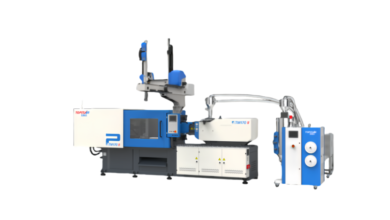How to Do Industrial Water Jets With High-Pressure Operate?

Industrial high strain water jets have definitely revolutionized cleansing, cutting, and floor practice techniques in an extensive type of industry. Most of these machines depend on the inherent power of water at a very high pressure to accomplish tasks as opposed to harsh chemicals, abrasive agents, and manual labor which require a lot of workmanship and effort. With an insight into how these complex systems operate, you will have an idea of one of the most practical and environmentally friendly industrial products in the market today.
High Pressure Water Technology’s Scientific Basis
Basic fluid dynamics and pressure multiplication physics provide the basis of any industrial high pressure water jet. Although incompressible, water can be compressed to incredible pressures that turn it from a mild cleaning solution into a potent industrial instrument that can cut through steel, remove tough deposits, and clean surfaces with never-before-seen accuracy.
Depending on the needs of the application, water enters the system either as treated water or as regular tap water. This change takes place in the pressurization chamber, where hydraulic pressure is created from mechanical energy. The result of such a process is that water is subjected to pressures of several hundred to tens of thousands of pounds per square inch. Once forced through the special nozzles, the pressure of water increases more forcing an intense jet of pressurized water with a concentrated flow that can have tremendous pressure in a very specific area.
To know the effectiveness of these systems, it is important to understand the relationship between pressure and velocity. At higher water pressure, the speed of the water stream passing the nozzle speeds up abruptly. The kinetic energy contained in this fast-moving stream could be precisely controlled and focused and could either be used to perform tough cutting tasks or finer cleaning tasks depending on the specific needs of the job.
Important Parts of Water Jet Systems in Industry
All industrial high-pressure water jet systems include the high-pressure pump as the central component that is responsible for providing the necessary pressures. They are most typically of a rotary or a reciprocating heart (or piston) construction and are each designed to handle a variety of flow rates and ranges of pressure. Whereas the reciprocating ones make use of pistons that move back and forth in cylinders to create pressure, rotary pumps work on rotating mechanisms that enable them to compress water.
The overall power and the ability or capacity of the system are dependent on the motor or engine that drives the pump. Electric motors are common with stationarity systems that have a direct power supply; diesel/gasoline engines are preferred in the mobile or the location that has no ready power supply. For best performance and efficiency, the power supply needs to be precisely matched to the pump’s needs.
To safeguard the internal parts of the high pressure system, water filtrations and treatment systems cannot be ignored. The systems also remove impurities like minerals and silt, among others that might hurt delicate components or deteriorate the purity of the water jet. Certain uses require specific different water treatments so as to produce optimal outcomes; e.g. some cleansing operations need demineralized water, and others require hot water to enhance clean up.
The systems for controlling and regulating pressure enable operators to modify the pressure output in accordance with the particular needs of each task. These systems prevent the system from becoming overly pressurized by maintaining constant pressure levels through the use of electronic controls, relief valves, and pressure gauges. In order to automatically alter pressure according to preset settings, advanced systems may have programmable controllers.
See also: Multicam Editing: Techniques and Best Practices
The characteristics of the water stream and nozzle technology
The nozzle is the last and possibly most important part of the water jet system since it controls the properties of the water stream that does the actual job. Complex engineering factors such as internal geometry, orifice size, and construction materials are all part of nozzle design. The pressure and flow rate of the flowing water stream are directly dependent on the size of the orifice through which they are passed for instance, the magnitude of the pressure and the flow rate is higher the smaller the orifice size.
Various nozzle designs produce distinct impact characteristics and spray patterns. Some nozzles provide a fine stream-focused jet to receive the maximum cleaning effect or cutting effect whereas others provide a wider spray pattern to defray a larger area. Mechanical rotating nozzles mechanically swerve the stream of water in a circular movement and take advantage of the coverage of an extended pattern whilst providing the intensity of a drawn stream. The material with which the nozzle is made must be capable of withstanding heavy water pressures and the potential abrasive force of the water pressure.
In broad terms, good nozzles are made of ceramics, hardness steel, or specialty alloy and they wear well and are accurate in the long term. Polish on the interior surface of the nozzle also affects the quality and constancy of the flow of water; accurately finished surfaces produce more harmonized and powerful jets of water.
Use in Cleaning Industrial Pipes
Pipe cleaning is one of the most taxing uses for industrial high pressure water jets. With this application, the walls of pipes and tubes have to be scrubbed clean of years of accumulation of deposits, scale, and rubbish. During cleaning of different types of pipes of various diameters and lengths, bends, fittings and other obstructions should be avoided and in that regard, require certain tools and techniques.
To this end, there tend to be power washer pipe cleaner in dubai brands which normally comprise bendable hoses that fit into pipes as well as certain nozzles that spray jets of high-pressure water at both, a forward and backward direction. The cleaning is done by the backward-directed streams, which clear the pipe walls of deposits, while the forward-directed streams assist in driving the cleaning head through the pipe. The cleaning system may simultaneously clean the surfaces and draw itself through the pipe thanks to this arrangement.
Industrial Uses in the Demanding Landscape of Dubai
Because of the specific industrial environment in Dubai, industrial high pressure water jets are particularly useful in addressing certain difficulties. The harsh circumstances brought on by the desert, high temperatures, and salty coastal air can cause corrosion, equipment fouling, and the buildup of different deposits on industrial surfaces and in pipe systems very quickly.
The oil and gas sector, which is well-established in the area, is mostly dependent on high pressure water jet technology for cleaning and maintenance tasks. These technologies are used to remove scale in piping systems, clean heat exchangers and prepare surfaces of systems to permit repairs and inspection. Through the precision and effectiveness of water jet cleaning, important equipment can be cleaned without exposing it to extreme chemicals that will cause damage to the environment.
Operational Aspects and Safety Considerations
Operation of an industrial high pressure water jet system requires proper observance of safety measures and proper training. The application of extreme forces might cause a lot of damage in case of failure to take relevant precautions. Operators need to know its capabilities and limitations, the proper means and uses of the different products and applications.
Conclusion:
Considerations of the environment entail protection against overspray and sound pollution, and disposal of effluent that could contain discarded toxins Features like noise reduction techniques and water recycling capabilities are included in many contemporary systems in order to address these issues.
As nozzle technology, control systems, and pump design continue to progress, so too will industrial high pressure water jet technology. These enhancements guarantee these systems’ continued significance in industrial applications across the globe by making them more accurate, efficient, and ecologically pleasant.







